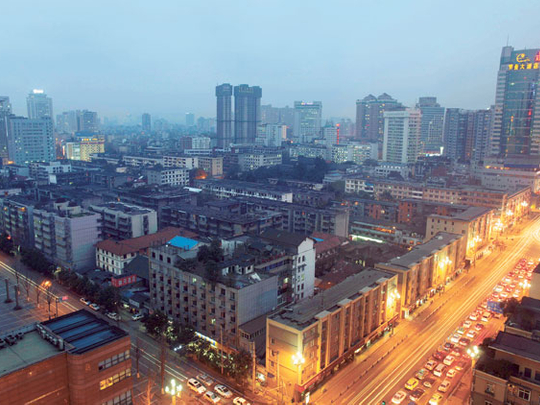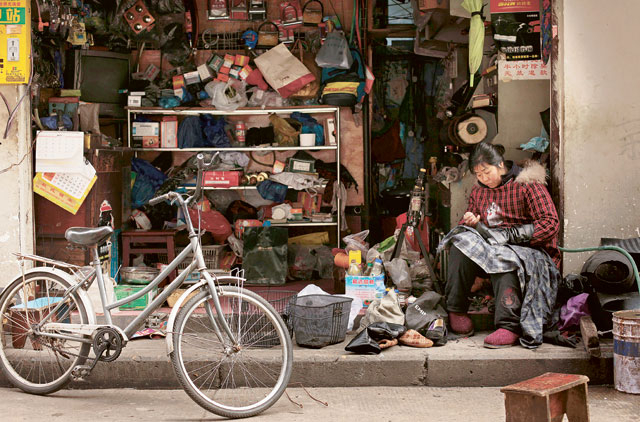
Beijing: Amid a clutter of 24-hour arc lights, gigantic cranes and dumper trucks, a behemoth is rising out of a field of churned mud on the outskirts of Chengdu in south-west China. Commuters skirt its vast perimeter fence on their way to the new metro link that cuts under the city. They barely glance at what looks like just another huge construction project in a cityscape that changes every month.
This project, though, is different. When finished later this year, its developers proudly boast, it will be the world's largest standalone building. The New Century Global Centre is a leisure complex that will house two 1,000-room five-star hotels, an ice rink, a luxury Imax cinema, vast shopping malls and a 20,000-capacity indoor swimming pool with 400 metres of "coastline" and a fake beach the size of 10 football pitches complete with its own seaside village. Alongside will be another massive and futuristic structure, a contemporary arts centre designed by the award-winning Iraqi-born architect, Zaha Hadid.
The scale of the centre is a sign not just of the ambition of Chengdu, capital of Sichuan province, but a potential vision of the future. Last week Chinese authorities announced that for the first time more than half of the country's population were living in cities, 690.79 million, an increase of 21 million, compared to 656.56 million rural dwellers. The new urban-rural balance was a benchmark attained by the UK in the late 19th century and the US in the first decades of the last century in 1800, only three per cent of the world's people lived in cities.
Astonishing rise
But the scale and speed of urbanisation across the developing world today are unprecedented, throwing up a string of megacities, from Jakarta to Istanbul, Paulo to Cairo. Poor rural families flooding into the world's urban population centres bring challenges that have never before been seen nor met.
Chengdu made the headlines in Britain late last year when it exported two pandas to Scotland, and it is developing a reputation as the centre of Sichuan's prized cuisine. But few in the west have paid much attention to the astonishing rise of Chengdu, despite a population (including its rural hinterland) of more than 14 million and its evident economic power and growing sense of self-confidence. Few have heard much either of cities like Ghaziabad, Surat or Faridabad in India, or of Toluca in Mexico, Palembang in Indonesia or Chittagong, the Bangladeshi port. Or of Beihai, another Chinese city on the northern coast. But this is likely to change. Each of these cities is among the fastest-growing settlements in the world. Their cumulative growth is set to usher in a new era of city living, changing the face of the planet. Beihai, which already has 1.3 million inhabitants, is set to double its population in seven years. The municipality of Chengdu will reach 20 million. Ghaziabad, now itself part of the urban sprawl of the Indian capital Delhi, is already home to nearly four million people.
Crucially, though experts estimate that the number of megacities of more than ten million inhabitants will double over the next ten to 20 years, it is these less well-known cities, particularly in south and east Asia, that will see the biggest growth. Predicting what the new era will bring is taxing economists, senior businessmen, security experts and strategists across the world.
Optimists see a new network of powerful, stable and prosperous city states, each bigger than many small countries, where the benefits of urban living, the relative ease of delivering basic services compared to rural zones and new civic identities combine to raise living standards for billions. Pessimists see the opposite: a dystopic future where huge numbers of people fight over scarce resources in sprawling, divided, anarchic ‘non-communities' ravaged by disease and violence.
— Guardian News & Media Ltd














